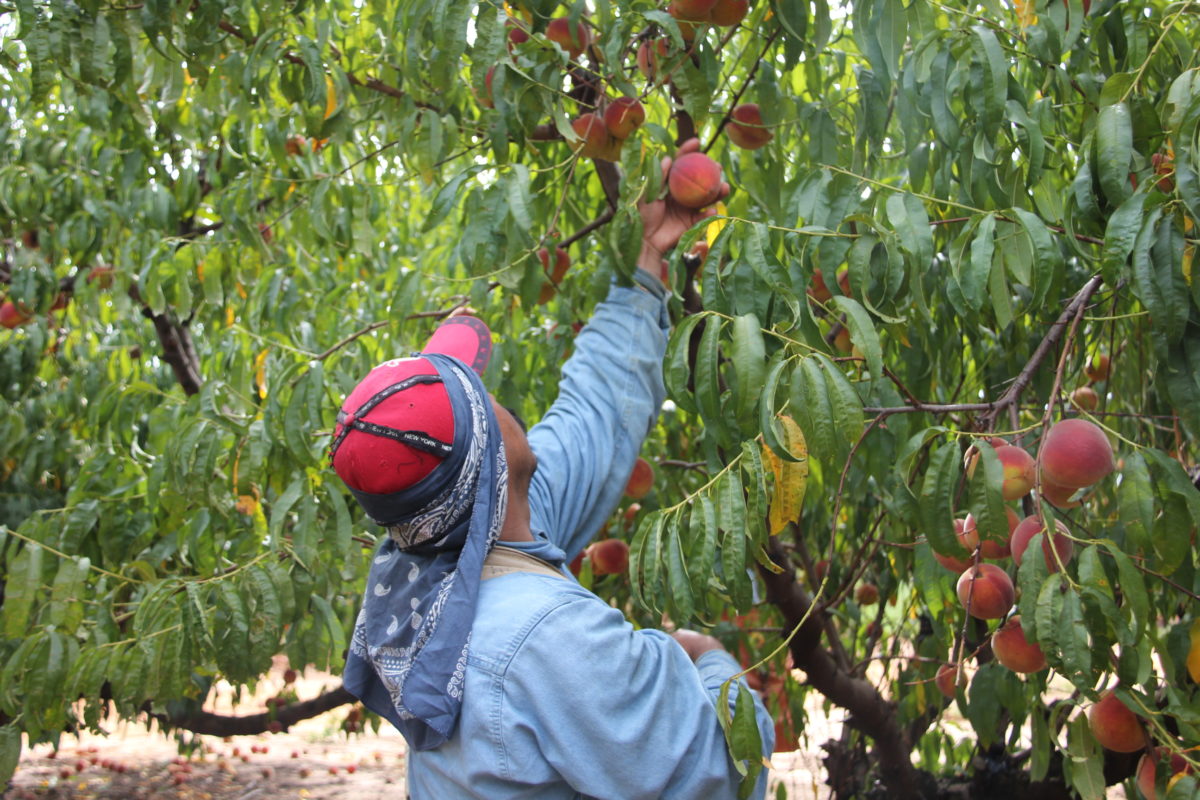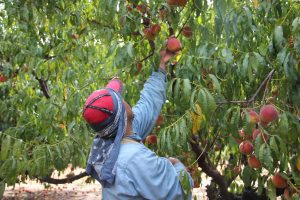Ask any specialty crop producer in the Southeast to identify the greatest agricultural concern today and virtually every one of them will say access to reliable, legal and affordable laborers. How has this become such a huge issue? What can be done to solve this issue to allow the southeastern region to flourish and grow in its production of fruits and vegetables?
In the United States, recent generations have had access to more, and arguably better, educational opportunities than the baby boomer generation, who made up the largest portion of our domestic workforce for the last five decades. As a result, we have fewer Americans interested in performing minimally skilled, physical labor that is difficult to do, but is required to plant, cultivate, harvest and pack specialty crops. This, coupled with the seasonal need for workers and the state of our U.S. welfare system, demonstrates that we have a limited supply of U.S. workers who are willing and able to work in this industry.
FOREIGN-BORN WORKERS
These factors, and others, explain why the vast majority of workers currently in specialty crop production are foreign-born. Most concerning is the legality of these workers. Depending what statistic you read, between 50 and 75 percent of the current foreign-born agricultural workers are falsely documented and are illegally present in the United States.
Farmers are by far the best environmentalists, but I believe them to be some of the best patriots as well. Farmers support the laws of this great nation while providing for their families and producing food, shelter and clothing for the rest of the country and world. Agriculture employers make every effort to follow the rules. They ask for necessary employment documentation and complete necessary paperwork. Yet under current federal laws, more often than not, they are unable to determine the legality of provided documentation.
The population of foreign-born workers is shrinking at an alarming pace, leaving labor-intensive agriculture with a bleak future. The majority of foreign laborers came to the United States in the 80s and 90s when it was relatively easy to enter the country illegally. However, over the last two decades, security along the U.S./Mexico border has increased, making this trip much more difficult.
As a result, two things have happened. First, the number of new workers entering the United States illegally has declined. Second, many of these workers have become trapped in this country. In past years, workers returned home after the harvest season to see their families — the loved ones for whom they diligently worked to provide a better life. Increasingly, they feared that if they returned home to Mexico, they would be unable to return to the United States the following year due to increased border security. Therefore, many have stayed for years, even decades, as this was the only way they could continue to support their loved ones back home.
Unfortunately, this workforce that has been the backbone of the specialty crop industry has begun to age-out and is returning to Mexico to retire with no intention of coming back to the Unites States. Statistics show we are at least six years into reverse migration with Mexico, meaning more immigrants are leaving the United States and returning to Mexico than are coming from Mexico into the United States.
H-2A ON THE RISE
The double-digit growth of the federal temporary agriculture work program, known as H-2A, is also affirming the shrinking labor supply. The H-2A program has been around for about 30 years, but only in the last few years has it become a significant supplier to the agriculture workforce. According to U.S. Department of Labor statistics, only 55,385 H-2A temporary workers were admitted into the United States in 2011, supplying approximately 6 percent of the country’s field and livestock workers. However, this year’s numbers are estimated to be in excess of 220,000, supplying nearly 25 percent of the workforce.
The Southeast adopted the H-2A program early in comparison to many regions of the country. In fact, in 2011, seven of the top 10 states using the H-2A program were from the southeastern region, employing 70 percent of the H-2A workers legally admitted into the United States. Yet even with these numbers, the vast majority of producers still did not use the H-2A program, citing its high cost, inflexibility, enormous bureaucracy and the litigious nature of the program.
WHAT’S NEEDED
As a producer using the H-2A program for the past 20 years, I can say the program is broken and needs to be reconstructed. The program was written in the 80s, and the agriculture industry and domestic workforce of today has changed significantly. Agriculture needs a new guestworker program that will:
- Protect the domestic workforce and allow the current workforce to remain employed without disruption
- Expand the program to meet the needs of the entire agriculture industry — from berry growers with very short seasons to year-round operations, including agricultural processors
- Reform the wage rate methodology, housing and transportation requirements
- Transfer oversight for the program from the U.S. Department of Labor to the U.S. Department of Agriculture and make the application process much more simplified
Therefore, I strongly encourage all farmers and their agriculture associations to support House Judiciary Chairman Bob Goodlatte’s AG and Legal Workforce Act bill (H.R. 6417). I have worked on immigration reform for more than 20 years, and this is the best piece of legislation that I have seen written. This bill has the support of 245 national, regional and state organizations, and that number continues to grow. The time is now! This bipartisan bill has more than 80 cosponsors. Those of us who are close to the process feel we have over 200 of the 215 votes necessary to pass this piece of legislation.
However, the only way to protect the future of production agriculture is through a grassroots effort. I encourage all agricultural employers to reach out to their representatives in Washington to request their cosponsorship of this legislation and confirm their support of the bill’s passage. Through a united effort, the leadership will get the message that this bill must be brought to the floor for a vote as soon as the members return from their August recess. For the Southeast to be able to flourish and increase its production of fruits, vegetables and livestock, there is no greater issue that must be solved than access to reliable, legal and affordable agricultural laborers.
Chalmers Carr is owner/president/CEO of Titan Farms in Ridge Spring, South Carolina.
This article was featured in the October issue of VSCNews magazine. To receive future issues of VSCNews magazine, click here.
Share this Post











